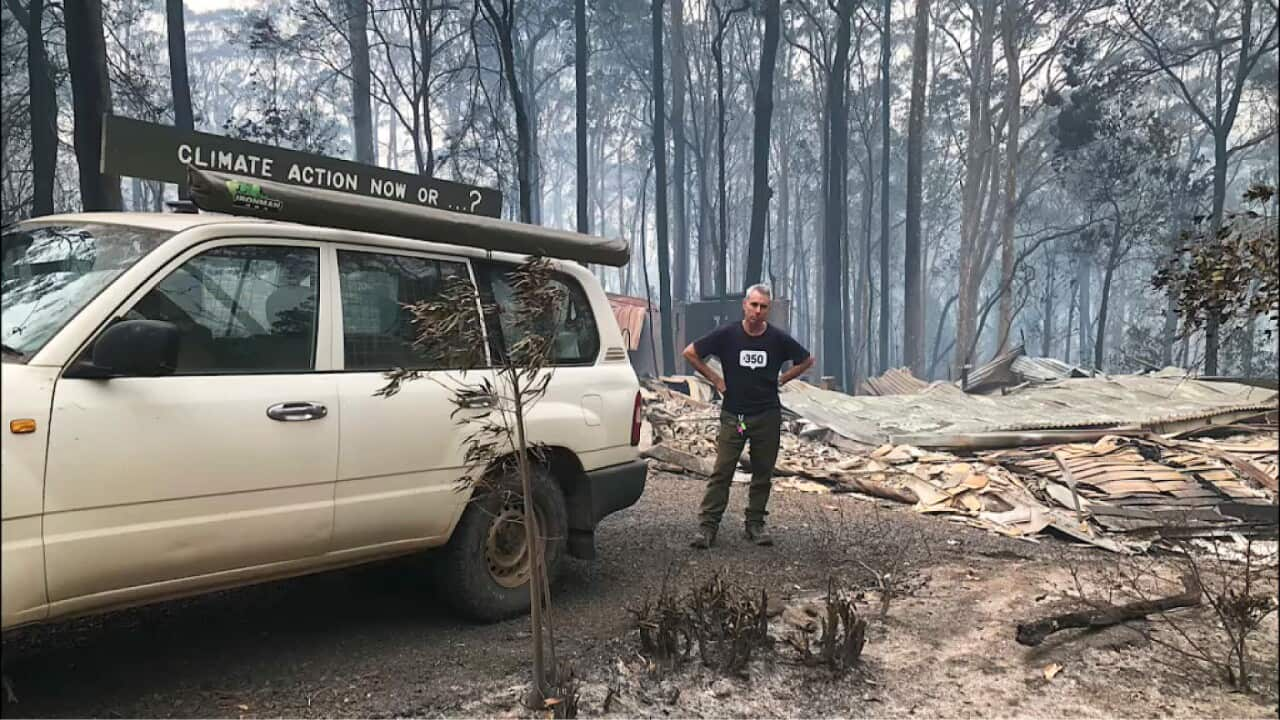Italian
Mentre il 2019 stava finendo, Jack Eagan lottava per salvare la sua casa.
“I knew that if I made a poor decision I would die.”
Jack e la sua compagna Cath sono fuggiti illesi.
Ma la loro casa di Rosedale nel sud del New South Wales era ridotta in macerie.
Quello è stato l’esito per i molti che hanno sofferto durante gli incendi della Black Summer, che è costata la vita a più di 30 persone.
Quasi tre anni dopo, Jack e Cath stanno ricostruendo nello stesso posto.
Ma la minaccia di un altro incendio incombe.
“There were 500 homes lost in our shire alone that day. When another bushfire comes, we will know what to expect if things go badly.”
Ed esperti – come il Dottor Simon Heemstra dell’Australasian Fire and Emergency Service Authorities Council – ha detto che le recenti piogge avranno un impatto quest’estate.
“What that is giving is a very high grass fuel load and as summer progresses and we start having drier days that grass is gonna dry out and become very significant fuel hazard for us.”
A settembre di quest’anno, il sistema di quantificazione del rischio incendi è stato reso uniforme a livello nazionale, ed è stato tradotto in più di dieci lingue.
Adesso, gli addetti ai lavori stanno cercando di capire sempre di più in che modo la tecnologia dell’intelligenza artificiale può essere d’aiuto.
Ecco ancora il Dr Heemstra.
“This new technology can have a significant improvement to our ability to suppress new fires and the fewer fires there are in the landscape the less potential there is for fires to get to a large size and impact on and threaten properties and lives.”
L’azienda americana Pano A-I è una società che implementa questa tecnologia.
Quando un incendio viene rilevato, la centrale della società conferma e manda un allarme nel giro di pochi minuti.
Il portavoce Arvind Satyam ha detto che questo sistema può aiutare le autorità in molti modi.
“They have got much better visibility into their entire landscape, they have the ability to look into the environment understand the fuel levels, understand post incident how has it evolved and what can we do better.”
Al momento, il sistema è operativo a Noosa nel nord del Queensland e nella zona di Riverina nel New South Wales.
Claire Stewart è la sindaca di Noosa.
“The advancement of technology can do wonders across so many spectrums and this certainly for fire management and mitigation will be a game changer.”
English
As 2019 drew to a close, Jack Eagan fought to save his home.
“I knew that if I made a poor decision I would die.”
Jack and his partner Cath escaped unscathed.
But their Rosedale home in southern New South Wales was reduced to rubble.
That was the outcome for many who suffered through the Black Summer bushfires that claimed more than 30 lives.
Almost three years later - they are rebuilding on the same site.
But the threat of another fire looms.
“There were 500 homes lost in our shire alone that day. When another bushfire comes, we will know what to expect if things go badly.”
And experts - like Dr Simon Heemstra from the Australasian Fire and Emergency Service Authorities Council - say the recent wet weather will have an impact this summer.
“What that is giving is a very high grass fuel load and as summer progresses and we start having drier days that grass is gonna dry out and become very significant fuel hazard for us.”
In September this year, the fire danger rating system has been made it nationally consistent and was translated in more than 10 different languages.
Now, fire authorities are increasingly looking into how Artificial Intelligence technology can help.
Dr Heemstra again.
“This new technology can have a significant improvement to our ability to suppress new fires and the fewer fires there are in the landscape the less potential there is for fires to get to a large size and impact on and threaten properties and lives.”
America based Pano A-I is one company implementing this technology.
When a fire is detected, the company's intelligence centre confirms and sends an alert within minutes.
Spokesman Arvind Satyam says that this system can assist authorities in many ways.
“They have got much better visibility into their entire landscape, they have the ability to look into the environment understand the fuel levels, understand post incident how has it evolved and what can we do better.”
It’s currently in operation in Noosa in northern Queensland and the Riverina region of New South Wales.
Claire Stewart is the Mayor of Noosa.
“The advancement of technology can do wonders across so many spectrums and this certainly for fire management and mitigation will be a game changer.”
Report by Francesca Di Nuccio for SBS News.
Ascolta tutti i giorni, dalle 8am alle 10am. Seguici su , e o abbonati ai nostri podcast cliccando .




